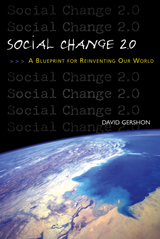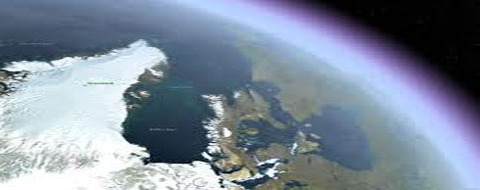ASSESSING THE SUSTAINABILITY OF YOUR COMMUNITY’S RESIDENTIAL WATER MANAGEMENT
The agencies involved in water management may have different names in each community. Generally they will fall under the following categories: municipal public works, water bureau, county or regional water agency, waste water treatment plant.
- List the programs your community has in place to help citizens conserve water. e.g., free water saving fixtures, information campaigns, etc.
- Describe why each program came into existence and its current goals.
- What have been the principal strategies used to achieve citizen participation? Which have been successful and why? Which have not been successful and why?
- How is success measured? Include the numerical targets of the program. If there are no targets, how might targets be established?
- What percentage of citizens participate in each program?
- What amount of water does each program conserve?
- What has been the participation and amount of water conserved for each program over the last three years? Has participation and conservation increased, leveled off or decreased?
- What neighborhoods have the most successful residential participation and water conservation?
- What neighborhoods have the least successful residential participation and water conservation? Why is this? Please describe what has been learned.
- Are the municipality’s storm drains and sewers combined? If so, would water conservation help alleviate any problems of combined sewer overflows?
- What incentives are there in the municipality, if any, for water conservation e.g., regulatory compliance with state or regional targets, avoided costs of building new infrastructure such as wells or wastewater treatment facilities, city ordinance committing to natural resource conservation as a principle of community sustainability, etc.?
- Which service providers benefit from water conservation? e.g., city water department from reduced costs to meet peak water demand, waste water treatment plant from reduced operating costs and extended life of current facility, etc.
- If fiscal benefits are derived from water conservation, how could these be calculated and projected over time, e.g., gallons of water needed to be saved to extend the life of the current facilities by a certain number of years, operational efficiencies of water treatment plant, etc.?
- Are there any policies to reinvest these financial savings into increased water conservation? Please describe. If not, how could a policy be put in place?
- What disincentives are there in the municipality, if any, for residential water conservation, e.g., increased revenues based on residential water use, financial obligations to pay off water treatment plant based on resident fees, etc.?
- Which service providers do not benefit from water conservation, e.g., city water department who increase revenues from volume of water supplied, companies that build city wells, etc.?
- Are there any municipal policies for assuring that incentives to water conservation are enhanced, and disincentives eliminated? If not, how might these be pursued?
- If the municipality has created disincentives to water conservation, what can be done to remedy this, e.g., renegotiate contracts with service providers based on incentives in water conservation, redesign policies, etc.?
BECOME CERTIFIED AS A SUSTAINABLE LIFESTYLE CAMPAIGN LEADER

A Sustainable Lifestyle Campaign leader certification is based on Empowerement Institute’s Social Change 2.0 community organizing framework. As part of the certification, you will learn how to facilitate an empowerment training, provide empowerment coaching, and use the Social Change 2.0 framework, strategies and skills to architect a transformational community intervention. You will also receive the Sustainable Lifestyle Campaign training scripts, organizing templates and guidance on how to customize the campaign to the unique needs of your community and project.
IMPLEMENT THE GREEN LIVING PROGRAM IN YOUR COMMUNITY
 The Sustainable Lifestyle Campaign is an education and outreach program to assist local governments, utilities and community-based organizations in implementing the Green Living Program. Empowerment Institute offers Social Change 2.0 community organizing leadership certification focused on implementation of the Sustainable Lifestyle Campaign and a customized community training.
The Sustainable Lifestyle Campaign is an education and outreach program to assist local governments, utilities and community-based organizations in implementing the Green Living Program. Empowerment Institute offers Social Change 2.0 community organizing leadership certification focused on implementation of the Sustainable Lifestyle Campaign and a customized community training.
IMPLEMENT THE CHILDREN'S VERSION OF THE GREEN LIVING PROGRAM
 Journey for the Planet
Journey for the Planet
A Kid’s Five Week Adventure to Create an Earth-friendly Life
Journey for the Planet is a children’s version of Green Living Program for kids 8 to 12 years old. This program can be delivered in a classroom, after-school club, youth organization or for children of adults taking part in an EcoTeam. It is complemented by a twenty-six-lesson plan educator’s curriculum called the “Coach’s Guide.” Empowerment Institute offers a Journey for the Planet teacher certification.
LEARN ABOUT SOCIAL CHANGE 2.0
 To learn more about the Social Change 2.0 framework and research underpinning the Green Living Program see Social Change 2.0
To learn more about the Social Change 2.0 framework and research underpinning the Green Living Program see Social Change 2.0
SUSTAINABLE LIFESTYLE CAMPAIGN TESTIMONIALS

“The program offers a common sense approach to environmentalism. [One participant says] ‘I love our neighborhood and this is an opportunity for us to make it an even nicer place to live together.’”
– The Boston Globe
